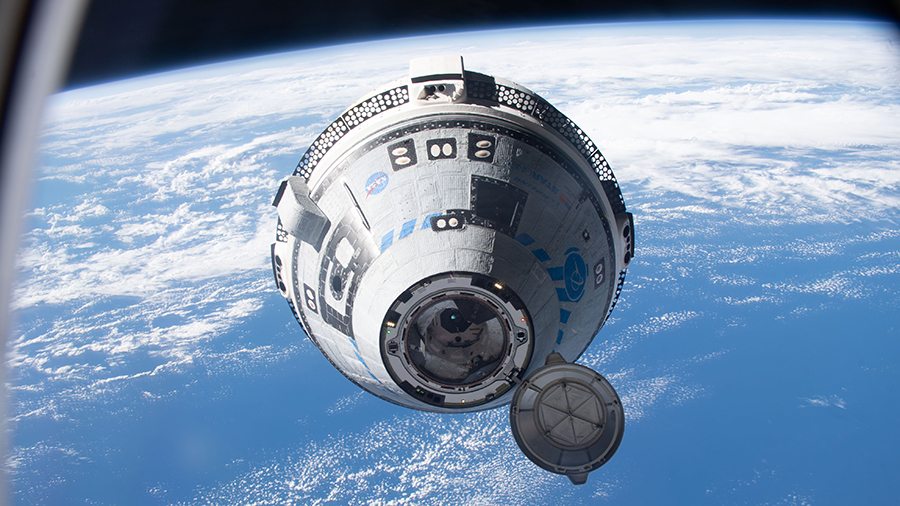
Spacewalk preparations and genetic research were the prime responsibilities for the orbital residents aboard the International Space Station on Tuesday. The Expedition 71 crew also worked on futuristic piloting studies and more eye and ear checks.
NASA astronauts Tracy C. Dyson and Matthew Dominick have been given the “go” by mission managers to begin a six-and-a-half-hour spacewalk at 8 a.m. EDT on Thursday. The duo will work outside in the vacuum of space removing communications hardware, known as the radio frequency group, then sampling for microorganisms potentially living on the outside of the orbital outpost. This will be Dyson’s fourth spacewalk and Dominick’s first.
The duo joined each other after lunchtime reviewing spacewalk safety procedures and printing checklists they will wear on their spacesuit cuffs. Toward the end of the day, the spacewalkers gathered with NASA Flight Engineers Mike Barratt and Jeanette Epps and called down to mission controllers to discuss readiness for Thursday’s spacewalk.
Mission managers will discuss the upcoming spacewalk details during a news conference at 4 p.m. today. Live coverage will air on NASA+, NASA Television, the NASA app, YouTube, and the agency’s website. Learn how to stream NASA TV through a variety of platforms including social media.
Barratt earlier scanned Dyson’s eyes with the Ultrasound 2 device imaging her cornea, lens, and optic nerve. Dominick recorded a video greeting for an audience in Colorado as Epps swapped water tanks inside the Tranquility module.
Starliner astronauts Butch Wilmore and Suni Williams spent their day on biomedical activities and gene sequence training. Wilmore took an inventory of the Human Research Facility checking items such as blood tube kits, saliva sample packs, gloves, and more. Williams studied procedures to collect microbe samples, extract their DNA, and sequence their genes to learn how to identify bacteria and fungi living in station water systems.
Cosmonauts Oleg Kononenko and Nikolai Chub took turns on Tuesday jogging on a treadmill while attached to electrodes recording their health data for a physical fitness test. The duo also worked on electronics gear swaps, life support maintenance, and station window inspections. Flight Engineer Alexander Grebenkin studied experimental spacecraft and robotic piloting techniques that may be used to train crew members on planetary missions. He also conducted a hearing test wearing headphones connected to a computer and responding to a series of tones.
Learn more about station activities by following the space station blog, @space_station and @ISS_Research on X, as well as the ISS Facebook and ISS Instagram accounts.
Get weekly video highlights at: https://roundupreads.jsc.nasa.gov/videoupdate/
Get the latest from NASA delivered every week. Subscribe here: www.nasa.gov/subscribe






